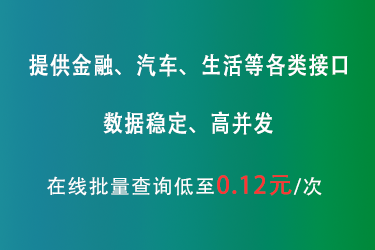当前位置:
首页 >
科技热点 >
二零零五年印度尼西亚Share of youth not in education, employment or training, total (% of youth population)为31.86,突破历史最高
二零零五年印度尼西亚Share of youth not in education, employment or training, total (% of youth population)为31.86,突破历史最高
2024-03-08 来源:wapi.cn Share
youth
not
education
employment
or
tra
total
youth
population
印度尼西亚
Indonesia
IDN
中高等收入国家
东亚与太平洋地区(不包括高收入)
【版权声明】该文章由挖数据整理发布,如需转载请注明出处。
根据世界银行2023年12月19日发布印度尼西亚Share of youth not in education, employment or training, total (% of youth population)数据,印度尼西亚,作为中高等收入国家其Share of youth not in education, employment or training, total (% of youth population)2005年该值最高31.86,2019年该值最低20.547,经过14年的变化,就从2005年的31.86降到2019年20.547
它是东亚与太平洋地区(不包括高收入)国家;在东亚存在着多个经济合作框架。“10+3”峰会始于亚洲货币危机。“10+6”是10+3+澳大利亚、印度、新西兰的框架。2011年东盟邀请美俄,“10+8”诞生了。此外,美国出于经济和地缘的动机在推动TPP。各个框架的诞生背景决定了其特点。从东亚共同体需要为实现汇率稳定的货币合作的角度来看,东亚共同体应该是有着10年金融合作的实际功绩和合作体制的“10+3”,青奥会接口不是其他的合作框架。事实上,日本期待CMI能够成为以AMRO为常设机构的亚洲货币基金,“10+3”将成为东亚共同体的雏形。
历年该国Share of youth not in education, employment or training, total (% of youth population)数据
- 年份 数值
- 1996年 27.099
- 1997年 28.081
- 1998年 29.007
- 1999年 29.815
- 2000年 29.376
- 2001年 29.85
- 2002年 31.063
- 2003年 31.521
- 2004年 31.419
- 2005年 31.86
- 2006年 30.419
- 2007年 30.031
- 2008年 28.15
- 2009年 27.666
- 2010年 26.649
- 2011年 25.897
- 2012年 22.949
- 2013年 22.888
- 2014年 22.354
- 2015年 22.919
- 2016年 22.479
- 2017年 21.449
- 2018年 21.738
- 2019年 20.547
- 2020年 21.8
- 2021年 22.455
- 2022年 22.336
数据表格1
- 印度尼西亚2005年国家政策和制度评估 贸易评级(1=低至 6=高)较2006年4.5持平
- 二零二二年印度Population ages 5-9, female (% of female population)8.33475创下新低
- 印度青年总体(占 15-24 岁人口的百分比)识字率
- 匈牙利2003年现价美元)对外投资净额(国际收支较2002年-8315910增长-29608.35%
- 匈牙利1992年Self-employed, male (% of male employment)较1991年24.0184增长0.46%
- 中国香港特别行政区1968年0-14岁的人口总数,女性较1967年7.2十万增长0.24%
- 洪都拉斯1999年已收到的官方发展援助净额较1998年12.1127增长61.98%
- 二零零七年海地约束税率,简单均值,制成品为17.76,突破历史最高
- 海地1998年小学生初等教育达到48.7326,突破以往任何一年
- 海地1996年国内总储蓄(占 GDP 的百分比)较1995年10.5645增长38.39%
- 几内亚比绍共和国2018年Unemployment, youth total (% of total labor force ages 15-24) (national estimate)为4.04,成为历史最高点
- 几内亚2013年Current education expenditure, secondary (% of total expenditure in secondary public institutions)下降至81.0419,跌破以往
- 几内亚2015年旅行项目收入国际旅游为2.3千万,突破历史最高
- 一九六五年危地马拉Population ages 70-74, female (% of female population)下降至0.704347,跌破以往
- 危地马拉1986年进口价值指数(2000 年 = 100)下降至5.86531,跌破以往
- 格林纳达2021年小学学校入学率83.4004创下新低
- 二零二一年格陵兰人均 GDP较2020年5.71万增长4.24%
- 二零零二年希腊男性15-64岁的人口总数为3.76百万,突破历史最高
- 希腊2020年旅行服务19.3002创下新低
- 加纳2008年能源相关的甲烷排放为41.3445,突破历史最高
- 黄杖子村村民委员会(211322)
- 深井村村民委员会(211322)
- 康家窝铺村村民委员会(211322)
- 章吉营子村村民委员会(211322)
- 金沟村村民委员会(211322)
- 勿兰勿素村村民委员会(211322)
- 三元井村村民委员会(211322)
- 小马厂村村民委员会(211322)
- 宽昌沟村村民委员会(211322)
- 奎德素村村民委员会(211322)
- 四盆营子村村民委员会(211322)
- 西山村村民委员会(211322)
- 河南村村民委员会(211322)
- 北山村村民委员会(211322)
- 大三家村村民委员会(211322)
- 土木营子村村民委员会(211322)
- 红山村村民委员会(211322)
- 大房身村村民委员会(211322)
- 大窝铺村村民委员会(211322)
- 那立奈村村民委员会(211322)
- 小塘村村民委员会(211322)
- 水头村村民委员会(211322)
- 七家村村民委员会(211322)
- 苏子沟村村民委员会(211322)























